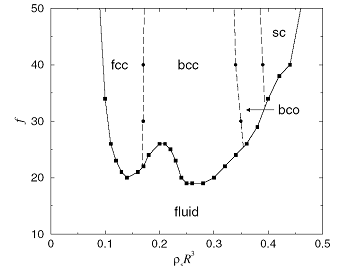 Dr.
Dr.Felix A. Plamper
DoktorandBis 07/2007 bei Makromolekulare Chemie II
e-Mail: plamper(at)pc.rwth-aachen.de
RWTH Aachen
http://www.rwth-aachen.de/
Lehrstuhl für Physikalische Chemie II,
Institut für Physikalische Chemie
RWTH Aachen
Landoltweg 2
52056 Aachen
Tel: 0241-8098613
Fax: 0241-8092327
Research Interests:
The behaviour of macromolecules depends on the molecular architecture.

Fig. 1: different
branched polymer architectures
So show branched
polymers reduced viscosity in solution and in melt due to decreased
dimensions compared to the linear analogues. Often the solubility
changes, which can be assigned to a higher number of chain ends. Those
can be solubilized in a different manner compared to the repeating unit
of the polymer. These are just two examples how one can combine altered
physical response with the same chemical building block (repeating unit
of the polymer). Branched polymers are even able to give
new physical properties unknown for their linear analogues. So can
polymers with star-shaped geometry behave like soft spheres. These
exert a radial pair potential with ultrasoft interaction, which leads
to ordered, crystalline phases in solution1. These were
predicted and experimentally proven for uncharged polymer stars. Only
theoretical work was done so far on polyelectrolyte stars (charged
polymer stars), which also promise rich phase behaviour2.

Fig 2: polyelectrolyte star; picture taken from Jusufi et al3

Fig 3: Phase behaviour of polyelectrolyte stars in dependence
of concentration (x axis) and arm number f (taken from Jusifi et. al)2
My task is to
synthesize and characterize appropriate polyelectrolyte stars on basis
of poly(acrylic acid) and prove the existence of theses phases
experimentally. These phases may be interesting for future applications
as optical grids in water (stars labelled with fluorescence dye).
Before we want to examine the phase behaviour, we want to determine the
solution properties in the diluted regime. Branching alters for example
neutralization. The higher the branching the less are protons
accessible to base. Furthermore the majority of counterions are
confined within the stars, so that the overall charge of the stars is
rather low. This counterion confinement shall be measured with
different techniques like osmometry, activity measurements (both count
free ions), Small Angle X-Ray Scattering (gives the distribution of
counterions) and self diffusion experiments (resolves fractions of ions
with different mobility) and electrophoresis (gives the overall
charge). Small Angle X-Ray Scattering will also play a crucial part in
discovering the ordered phases in solution.
Finally I am not only interested in star-shaped architecture but also
in brush-like geometry. Especially cylindrical brushes may for example
be used in future as templates for nanowires. Therefore I develop new
strategies to obtain brushes for special monomers like vinylacetate.
(1) Likos, C. N.; Löwen, H.; Watzlawek,
M.; Abbas, B.; Jucknischke, O.; Allgaier, J.;
Richter, D.
Phys. Rev. Lett. 1998, 80, 4450.
(2) Likos, C. N.; Hoffmann, N.; Jusufi, A.; Löwen, H. J. Phys.: Condens. Matter 2003, 15, 233.
(3) Jusufi, A.; Likos, C. N.; Löwen, H. Journal of Chemical Physics 2002, 116, 11011-11027.
>> Publikationen
>> Doktorarbeit


